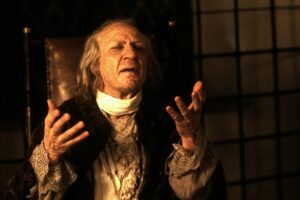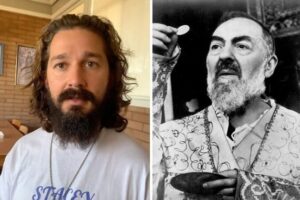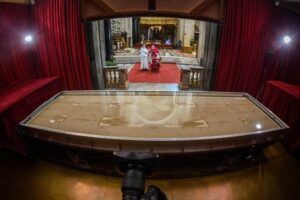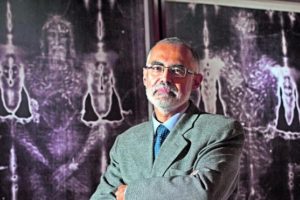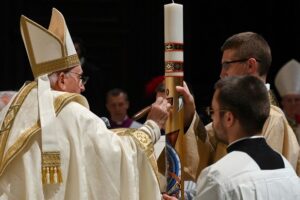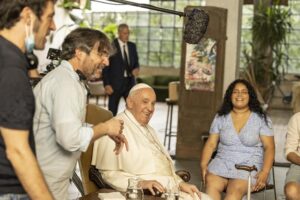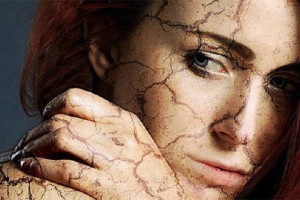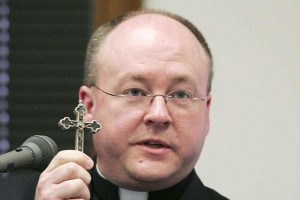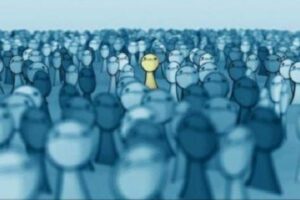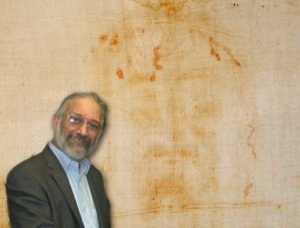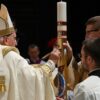Simon Brown interviews Barrie M. Schwortz
The Shroud of Turin shows the image of a man, front and back as would be expected if it were wrapped around a body for burial purposes. The outline of the man is clearly visible, though very subtle with no definite lines or angles, but you can see the mans face, crossed hands, shoulders, legs and feet distinctly. The shroud is marked by blood stains which match precisely the wounds that a man crucified by the Romans would have suffered – scourge wounds from the flagram or whip, puncture marks around the head where Jesus was said to have worn a crown of thorns, and the darkest blood stain of all near where the mans heart, which would have been caused by the spear that pierced him while he hung.
There are blood stains also on the wrists of the man of the shroud, which would have been where the Romans drove nails through when they crucified him, not through the hands where many contemporary paintings show these wounds to be. The images of the mans cheek bones appear swollen, as if he had been beaten, which we know Jesus was. All in all, the wounds of the man of the shroud correspond exactly to the biblical description of the crucifixion of Jesus Christ.
How the image on the Shroud of Turin was formed remains a mystery even to todays scientists. In 1978 a team of American scientists and researchers, the Shroud of Turin Research Project, were allowed to conduct a series of scientific experiments in order to try to determine the origins of the shroud. Their conclusions are regarded today as the most comprehensive set of scientific data about the shroud anywhere in the world, and some of the team continue to seek answers to questions regarding its authenticity.
